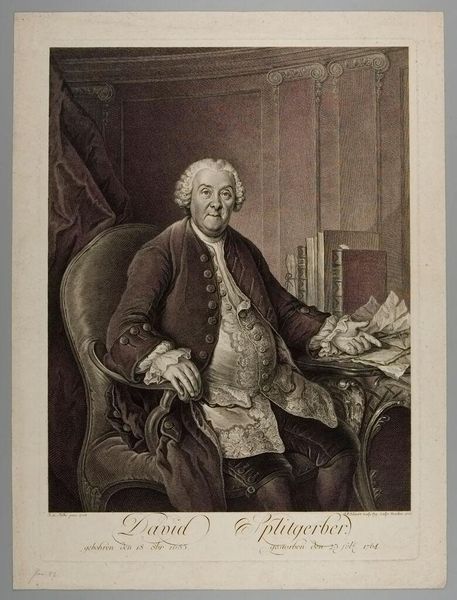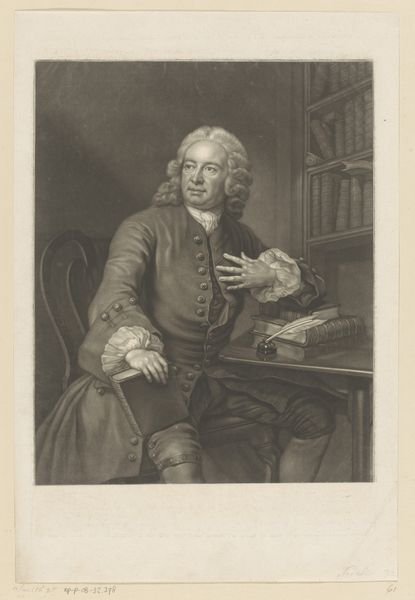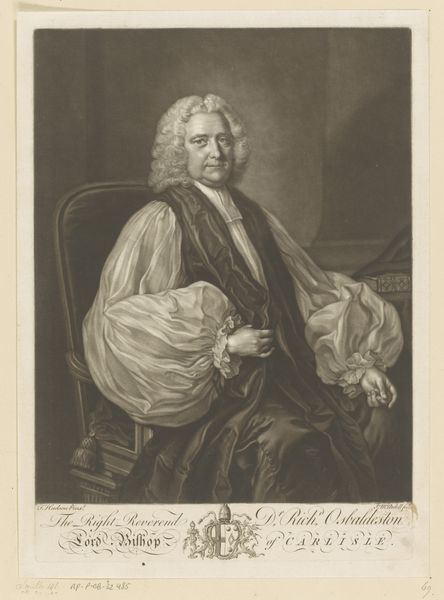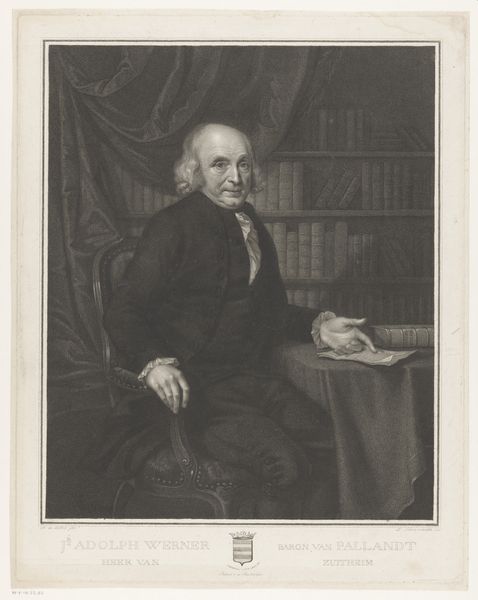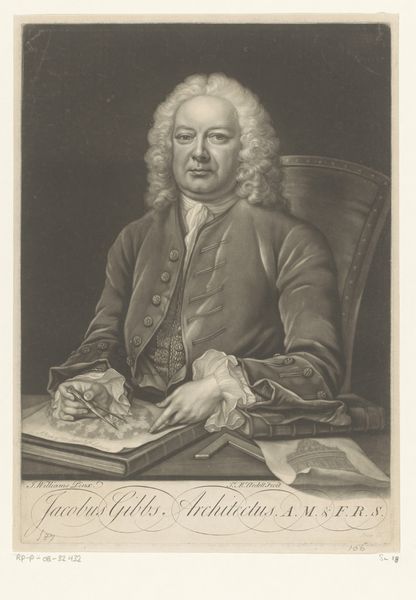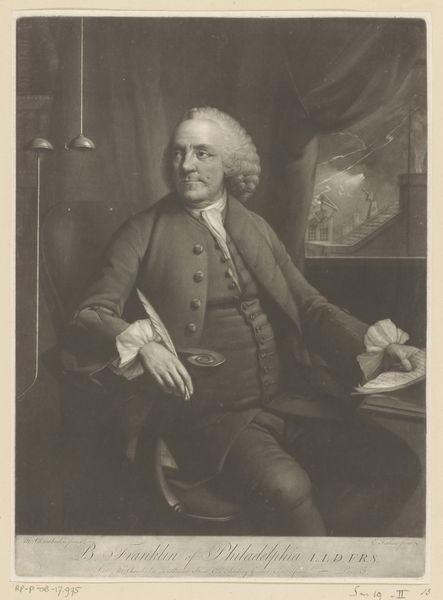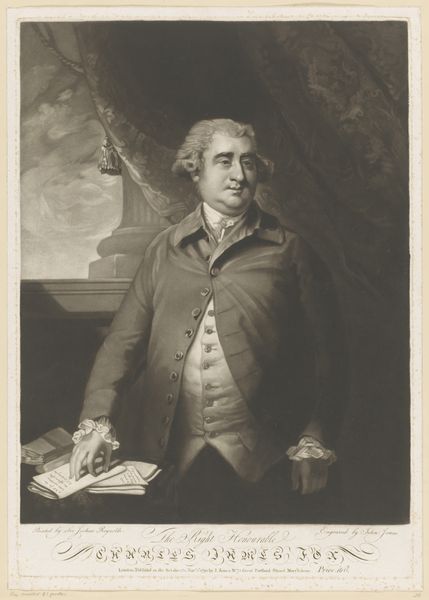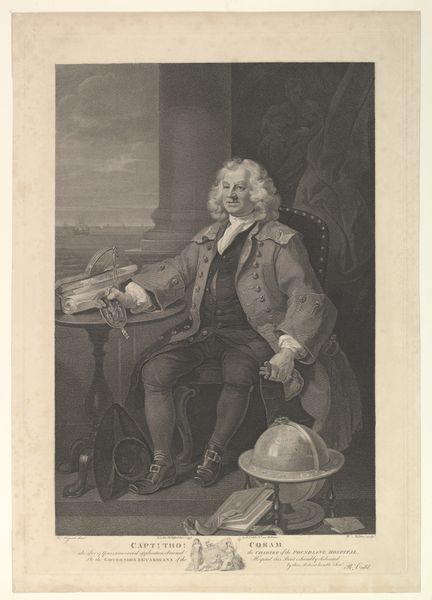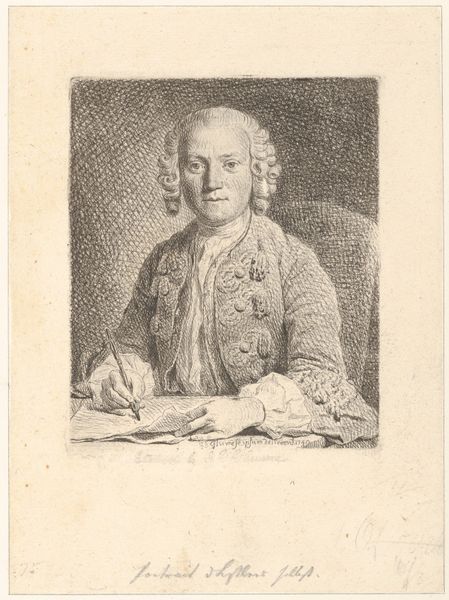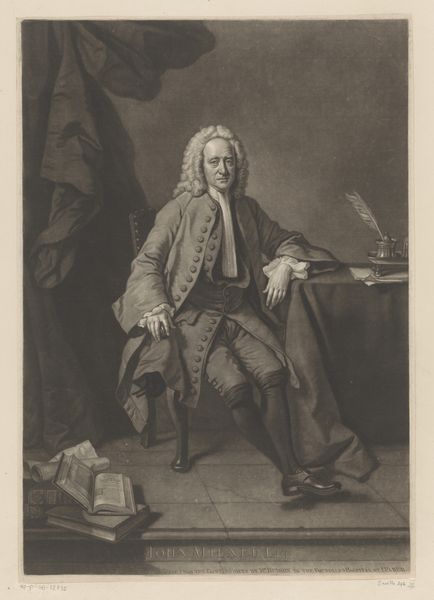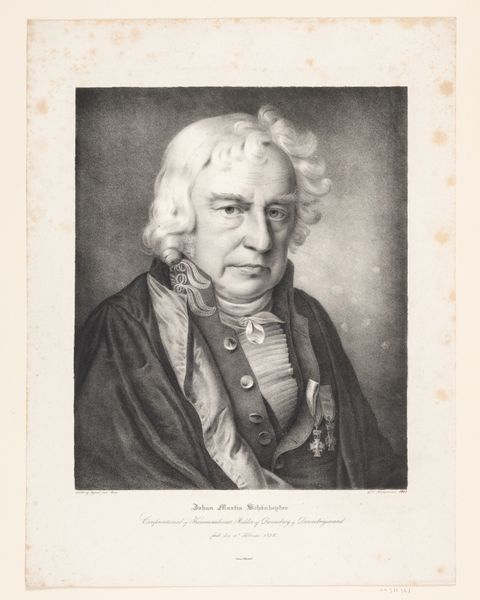
Dimensions: height 520 mm, width 374 mm
Copyright: Rijks Museum: Open Domain
This is Georg Friedrich Schmidt’s “Portret van David Splitgerber,” an engraving, made at an unknown date. Engraving is a printmaking technique where the artist uses a tool called a burin to carve lines into a metal plate, usually copper. The plate is then inked, and the ink held in these lines is transferred to paper under high pressure. Consider how Schmidt’s skill in manipulating the burin allows him to create an incredible range of tonal variation and fine detail. Look closely at the textures he creates: the soft folds of the sitter’s clothing, the polished surfaces of the furniture, the crisp edges of the books. These are all achieved through the precise control of line. But there is also a social dimension to this print. Engravings like this played a crucial role in the dissemination of images and ideas in the 18th century. They allowed portraits and other artworks to be reproduced and shared widely, contributing to the growth of a visual culture tied to commerce. The creation of these plates was labor-intensive, involving skilled artisans working within a complex system of production and distribution. So, next time you look at an engraving, remember that it’s not just a picture, it’s a record of skill, labor, and the social forces that shaped its creation.
Comments
No comments
Be the first to comment and join the conversation on the ultimate creative platform.
